“Don’t look now,” I whispered “But there’s a wolf right behind you.”
Just centimetres from my mother’s neck were the powerful jaws of an origin North American timber wolf ¹. Was my mother, a great grandmother, about to suffer the same fate as Little Red Riding Hood’s grandmother?
Up until that moment I had not realised quite how big a wolf was. There was glass and wire between those jaws and my mother’s neck but a few minutes later, up on the Lakeland Fells nothing would separate us from those fangs.
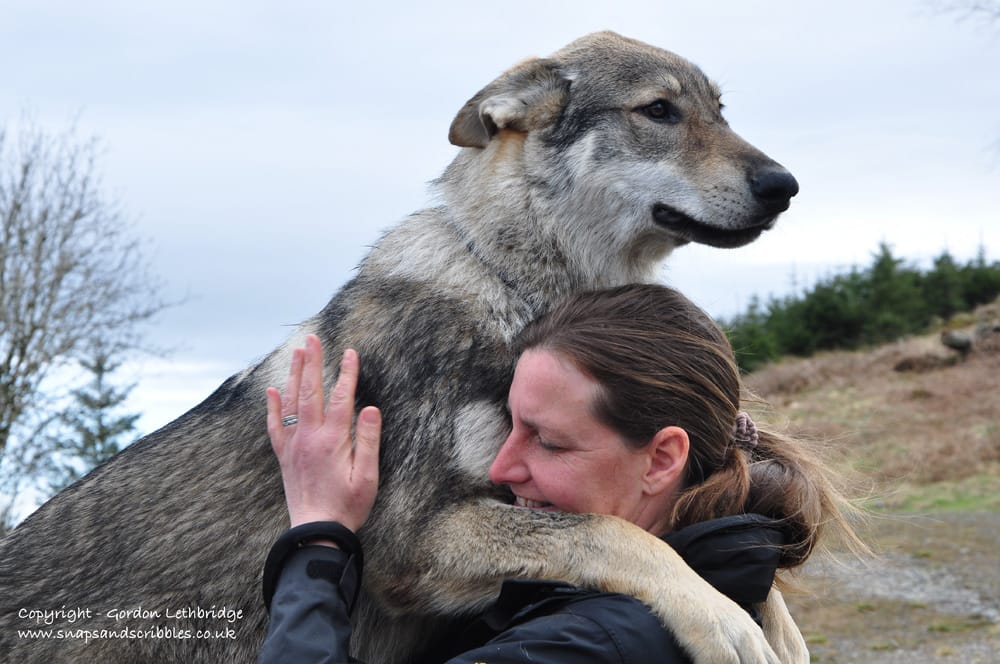
When my mother turned 80 the family decided to make it especially memorable. She had expressed a desire to walk with wolves. Having spent time in West Africa where her wildlife experiences included romping with lion cubs, coping with three sons who collected snakes, adopting baby monkeys and rearing a duiker it would need to be something a little out of the ordinary.
After some research we discovered that you could indeed walk with wolves in the UK. However it appeared that you did it in the company of a dozen or more other people and the wolves were kept on leashes. My mother wanted to be able to interact with the wolves, be accepted, or not, as the case may be and learn about communicating with them. That’s not easy in a crowd.
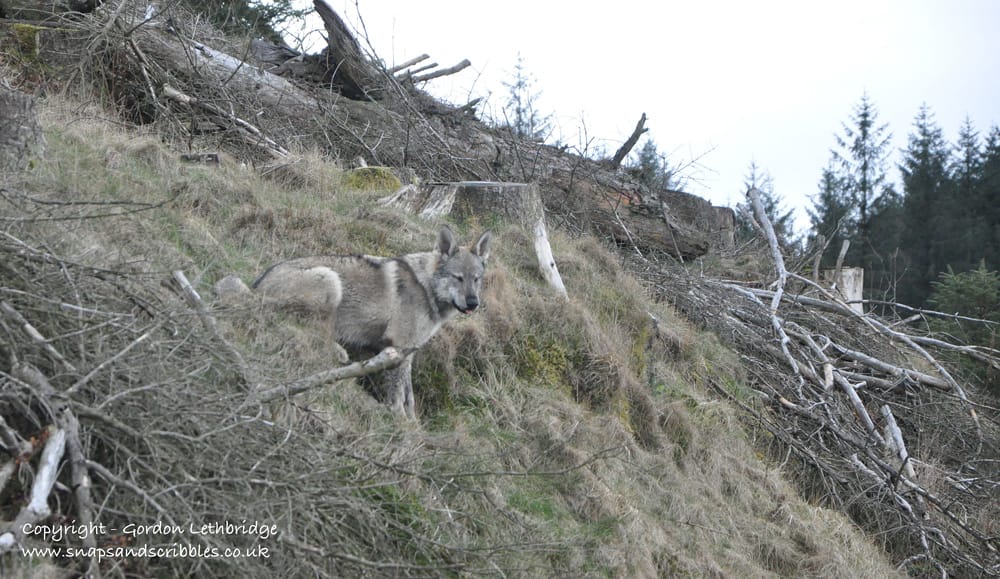
Then we discovered Predator Experience and their new Walk with Wolves experience. After speaking with Dee Ashman and reading their blog I discovered that the maximum size of any group is four and that they walk with the wolves off the leash. Their philosophy with both the wolves and their eagles and other raptors is to make the experience as natural as possible in an environment that is as near as possible to their native habitat. Just as important they would tailor the walk to suit the abilities of an eighty-year-old.
On changeable April day up on the a breezy Lakeland Fell close to Gummer’s How, over which the last wolf to be killed in England was pursued, we walked beside Maska and Kajika. At first I was a little apprehensive. Among my many wildlife experiences I had been stalked by a leopard and charged by an elephant but these were sudden and unexpected events. Now we were essentially becoming part of the pack.
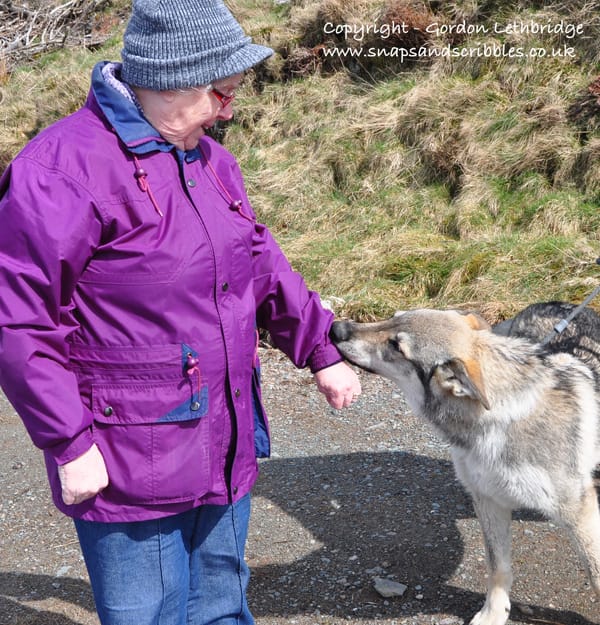
I turned to see Maska, one of the wolves, with my mother’s hand in his mouth.
Dee had warned us about this. It was not a prelude to losing a hand or a show of aggression but a sign of acceptance. What a thrill to be accepted by such a powerful creature.
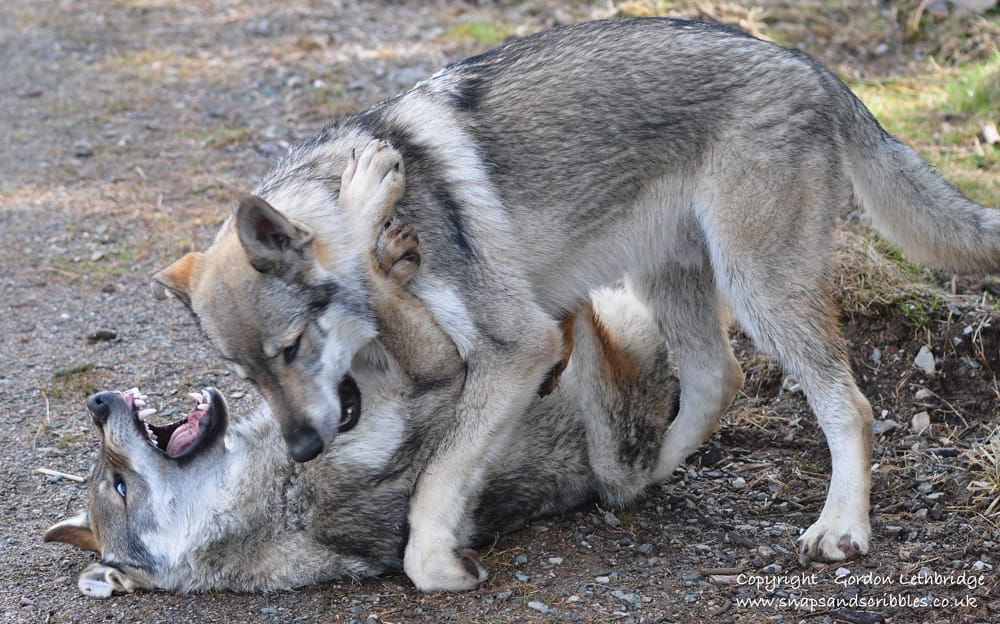
We headed to a nearby stand of pine forest, the wolves natural environment. Long before we reached the woods the two wolves were romping and play fighting. It looked pretty fearsome but we were assured by Dee that their body language indicated this was not for real. Kajika and Maska were testing each other out and establishing who was to be the alpha male. The alpha, male or female, in any pack is not necessarily the strongest but the cleverest. The alphas get the best bit of any kill, which is not as we humans would think, the choice cuts. They would eat the parts of any kill that contained the adrenalin, such as the heart. They then would absorb this and the smell of adrenalin was a mark of rank and established them as the alphas.

Apparently wolves have the second most complex social system in the animal kingdom. In first place are humans. There are the alpha male and female with well defined roles who head up the pack. Next are the betas with the deltas. The Delta Force are tasked with the hunting and killing of prey.
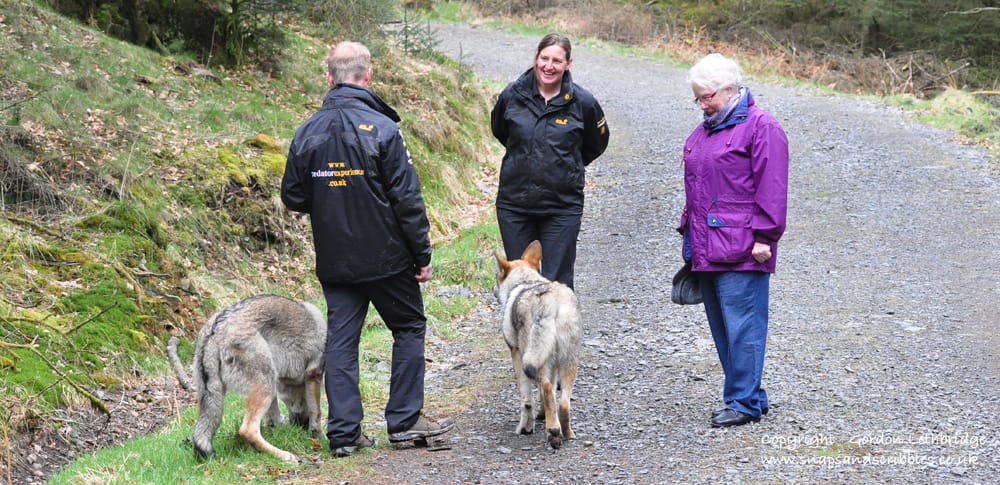
As we continued to walk foot by paw with these magnificent creatures we learned and saw how they communicate through body language. The tail is a good indicator of how they are feeling; fear, aggression, happiness are all communicated with tail position. There is even a “sitting on the fence” position; “I’ll wait to see what you do before I respond” attitude. Bared fangs does not necessarily mean aggression but could in fact be a “smile”.
Males we were told rarely fight in earnest, being content to “strut their stuff”. She-wolves on the other hand will often fight tooth and claw at the slightest provocation and only stop when the fight is broken up by a male.
The pair would run off into the forest all the while keeping the rest of the pack, us, in sight. Occasionally they would break off their exploring, their testing each other out and their following the rustle of some unsuspecting woodland creature, to chew on branches to keep their teeth clean and healthy.
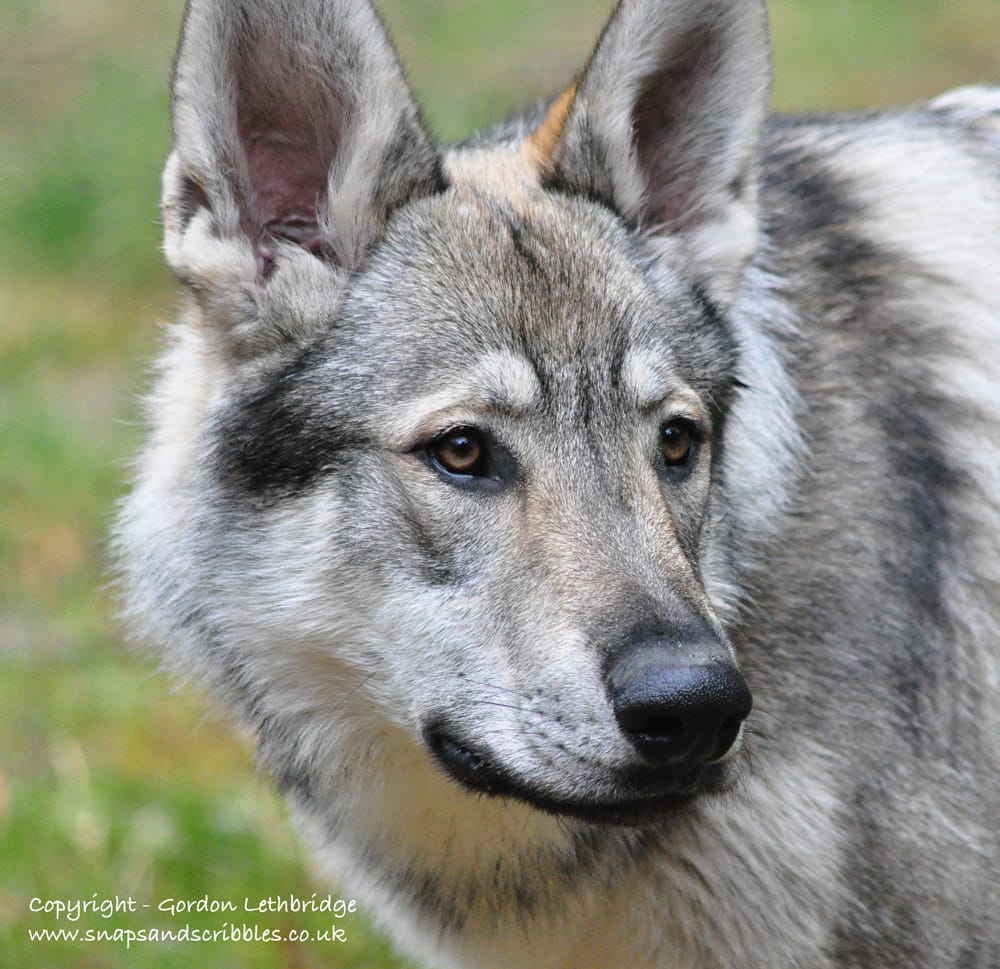
Apart from the interaction with the wolves, on their terms and in their time, there was a chance to learn. The Timber Wolf is a relatively shy and retiring animal as far as humans are concerned.
“Where,” I wanted to know, “Had the wolf got it’s fearsome reputation from?”
From Europe is the answer. North America historically was far less populated with humans compared to the home of the Eurasian Wolf. As a result there was far more conflict. Myths and legends grew up around these conflicts generating yet more fear and more myths.
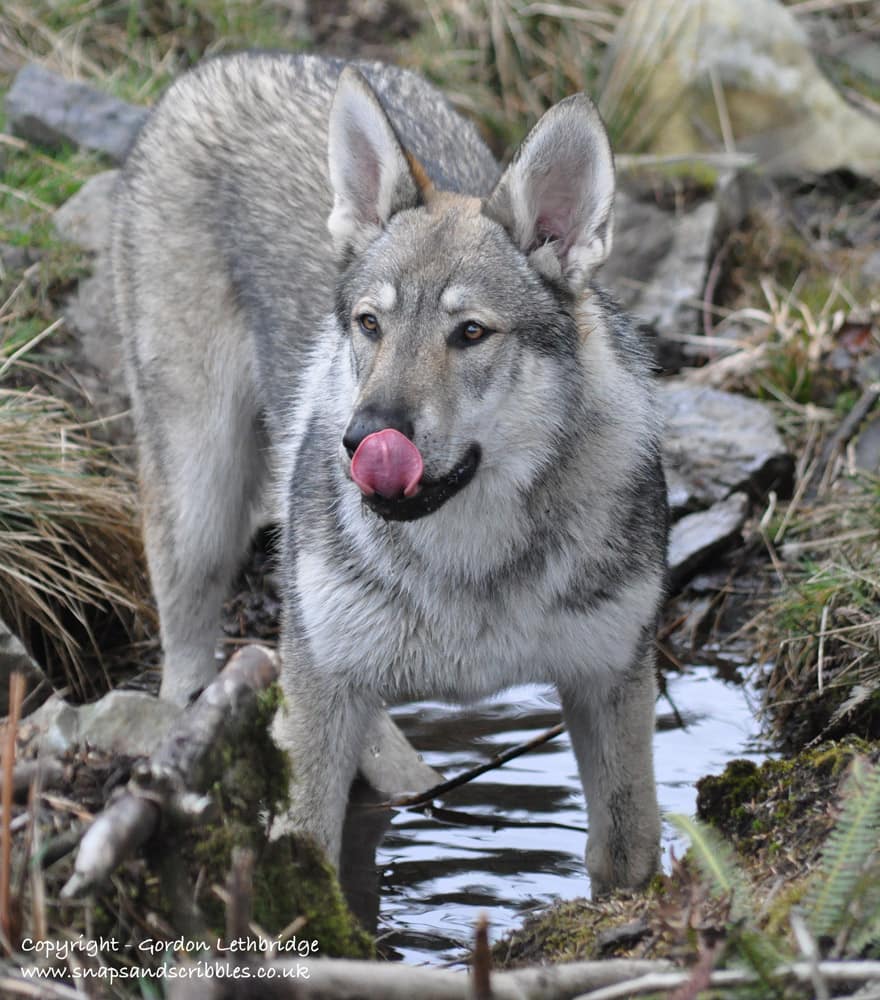
I discovered too, that my advice “Don’t look now” at the start of this post is the worse thing you can do. Wolves look into your, or other wolves, eyes to read your intentions. Look them in the eye. It’s not every day you can go eyeball-to-eyeball with a wolf with no glass or wire between.

I came away feeling no apprehension but rather respect for an animal, I now recognised, had instilled a chill of fear in me.
And my mother? In her own words:
Interaction with wild animals is something that I enjoyed in Africa but I did not expect to do in the UK. For me it was almost a spiritual journey to interact with another part of God’s creation, and to find that this “other part of me” is actually still there and is recognized by the animals.
The quality of the experience far exceeded our high expectations. Predator Experience’s Walking with Wolves is new this year and is well worth taking. Visit their website for other experiences with predators including flying both species of British eagles on the fells and a hawk walk in their natural habitat.
Link: www.predatorexperience.co.uk
Contact: info@predatorexperience.co.uk or call 07733 366748/07500 956348
Footnote: ¹ An origin timber wolf is one that has wolfdog (in this case Czech Wolfdog, itself bred from wolf) bred into its line 3 or 4 generations back. This is made quite clear when booking a Walking with Wolves Experience
If you want to know more about wolves then check out the Wolves Page in the Travel Unpacked Shop
Pin it
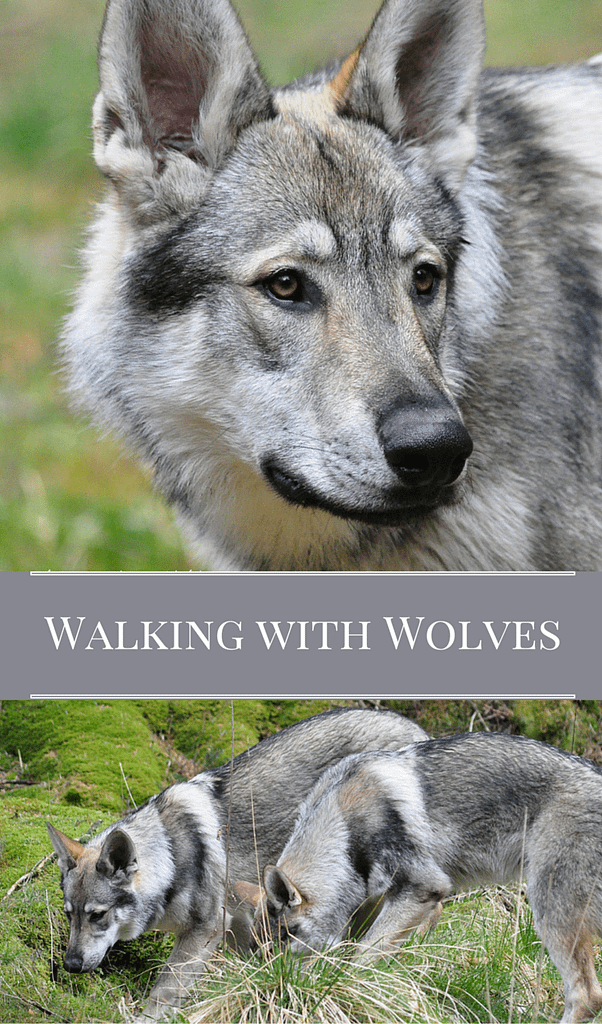




4 thoughts on “Walking with Wolves”
Wow what an amazing experience and so well captured (awesome shots too) – so glad for your lovely Mum 🙂
It really was an amazing experience and not far from where legend tells us the last wolf in Britain was killed
Hi Gordon, I am glad you enjoyed your experiance but you should know that trading standards are investigating this predator experiance as the lovely creatures you played with are actually wolfdogs and not wolves and so people like yourselves are being misled. I know of 4 people who have contacted trading standards about this issue. wolves do not have large pointed ears, that is one of the biggest ways of telling the difference. you can actually rescue or adopt a dog that looks exactly like this from wolfdog rescue.
Yes Heather you are right, they are wolfdogs, they are related to my dog who lives with me, my husband and another wolf dog in our house, they sleep next to us on the sofa and come to bed with us at night, they are far from wild beasts and these people are exploiting them to make shed loads of money……I think they have now revised their website but in my opinion it is still misleading…..
Comments are closed.